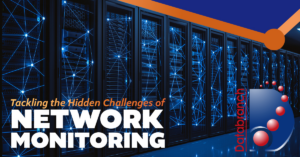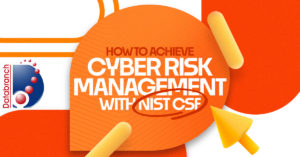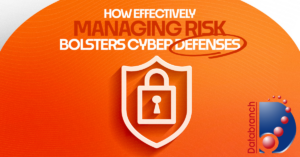
In the world of business, your data holds the key to understanding customers, market trends and internal operations. Making the most of this information is crucial for improving customer experience, driving innovation and enhancing overall productivity.
You can unlock the full potential of your digital data with efficient data management and data governance.
Data management is all about organizing, securing and retrieving information in a way that makes sense. Well-managed data streamlines processes, encourages collaboration and provides you with reliable business insights, giving your business a real edge.
It’s crucial to know the difference between data management and data governance to get the most out of your data. Although the terms are sometimes used interchangeably, understanding the difference is essential for navigating the complexities of the data-driven era.
Along with this, data loss disasters come in many forms. Ranging from full-scale natural calamities to cyberattacks and even simple human errors. Apart from financial and reputational damage, failing to protect valuable data can also result in expensive lawsuits.
That’s why businesses, regardless of size, must have a backup and disaster recovery (BCDR) plan. By implementing a foolproof BCDR, you can quickly get your business back up and running should disaster strike.
Demystifying Data Governance
Data governance is about setting rules for managing your data. It addresses data ownership, usage and quality while ensuring privacy and security standards are met. The goal is simple: to make sure your data is accurate, consistent, and secure by following the rules set by regulators and your own policies.
Compared to data management, which deals with the technical side of things, data governance focuses on using data responsibly and ethically, aligning with your organization’s goals.
It is essential to have a clear understanding of data governance in order to establish a robust foundation for data management.
Navigating The Importance of Data Governance
Inconsistent data can lead to bad decisions. Poor data governance can even get you in trouble with regulators. On the flip side, good data governance can help you make better decisions, innovate and increase profits. It’s all about making sure your data is accurate and reliable for making smart choices.
Mastering Data Governance Best Practices
Follow these simple practices for effective data governance:
Start Small
Begin with a manageable workload, ensuring a smooth transition as you gradually scale your efforts.
Build a Dedicated Team
Form a committed team equipped with the necessary skills and resources dedicated to your data governance program.
Set Clear Goals
Define transparent objectives for your data governance, communicating them clearly with your team and stakeholders.
Make Way for Open Communication
Foster stakeholder transparency by openly communicating with external partners, building trust and ensuring alignment.
Embed Data Governance in Every Department
Integrate data governance into every department, creating a collaborative and cohesive approach to data management.
Identify and Mitigate Risks
Recognize and address risks at key points in your data governance program, mitigating potential threats to its success.
Evaluate Projects
Assess your projects upon completion, identifying areas for improvement and learning from both successes and failures.
Consistent Refinement
Continuously refine your governance framework to keep it up to date and aligned with your organization’s evolving needs.
Take Action Now
Data can be tricky, taking time and knowhow. As your trusted IT partner, we get the ins and outs of data management. Let us guide you to make the most of your data, helping you make informed decisions that drive growth.
Reach out today at 716-373-4467 option 6, or [email protected] to get started.
Read More

In today’s business landscape, data isn’t just power — it’s the very lifeline that fuels business decisions, drives innovations and shapes strategies. However, businesses often find it difficult to effectively manage the vast amounts of data they hold, and that’s where data management comes into play.
Simply put, data management is all about collecting, storing and analyzing data in the most efficient way possible to help businesses like yours make informed decisions, optimize operations and ensure cybersecurity.
In this blog, we’ll look at the consequences of improper data management and discuss how businesses like yours can effectively deal with these challenges.
Potential Consequences of Improper Data Management
Failure to manage your data effectively can lead to the following consequences, including missed opportunities, inefficiencies and even business-ending events.
Poor Decision-Making
Imagine navigating the roads using a faulty map. You’re bound to end up in the wrong place. Without accurate data, you will be charting a flawed business trajectory toward wasted resources, missed market opportunities, and ultimately, strategic missteps that hurt your business.
Reduced Efficiency
If your employees are working in siloed systems, drowning in a sea of duplicate data and wasting precious man-hours sorting the mess, you won’t have time for productive work. Ineffective management erodes productivity and keeps your business from growing.
Increased Risk
A leaky boat is bound to sink. Poor data management can sink your business by exposing you to security risks and even data breaches that could result in non-compliance with regulations, leading to legal issues and fines.
Implementing a well-thought-out cyber risk management strategy can significantly reduce overall risks and strengthen your cyber defenses. Visit us here to learn more.
Decreased Customer Trust
Mishandling of customer data is like breaking a sacred covenant. It fractures your reputation and erodes trust, leading to client disengagement and a tarnished brand image that could be difficult to rebuild.
Competitive Disadvantage
Think of a large, inaccessible gold mine. Now, imagine all that untapped precious metal. That’s exactly what businesses that lack data management strategies resemble. If you fail to leverage data, you are bound to lose ground to businesses that use analytics and AI to unlock groundbreaking insights and fuel future success.
Increased Costs
Poor data management slowly eats away at your revenue and bloats your expenses. You end up incurring expenses on storing duplicate or irrelevant data that do not contribute to your business growth.
Data security incidents can also bring business to a grinding halt, costing a business thousands. Do you know what the cost of downtime is for your business? Visit our Recovery Time Calculator if not.
How We Can Help with Data Management
The good news is that you can partner with trusted guides who are equipped with the expertise and resources to transform your hidden data liabilities into revenue-churning assets.
Here’s how an IT service provider can put you on the road to success:
1. Never Worry About Data Loss
Adopting a comprehensive backup and business continuity and disaster recovery (BCDR) strategy is a necessary addition to every data management plan.
Databranch offers our BCDR solution from Datto, the leader in Total Data Protection. Not only will the Datto backup all your data to the device itself, but it will also backup everything to 2 separate offsite cloud storage locations.
So, in the event that the local device is destroyed, you can still access your information even from a remote location.
With Datto you will receive daily backup verifications and screen shots of your virtual servers give you peace of mind and ensure that your backup data is working and accessible to you when you need it.
2. Get Advanced Protection
Databranch is here to keep your business safe from cyberthreats that are lurking in the dark. We allow you to focus on your business by knowing that your assets are being protected with advanced security measures that can repel sophisticated attacks.
Our managed client platform provides a comprehensive suite of security tools that safeguard your network and bolster your cyber defenses. Reach out to our team today to learn more.
3. You Have Access to Top IT Experts
Imagine having a team of IT experts working for you without breaking the bank. Data problems can bring your business to a halt, but with the help of Databranch, you can easily manage or resolve any data-related issues anytime, anywhere.
4. Always Stay Compliant
Data compliance regulations related to privacy and security are always evolving. It can be tough to keep up with rules and regulations while managing the day-to-day activities of your business. However, Databranch provide some guidance which will help you stay ahead of the curve and ensure you meet the stipulated regulations.
5. Tailored Strategies that Lead to Success
Tailor made data management strategies will help meet your business goals and allow you to transform your data into a strategic asset.
Secure Your Future
Your data is your gold mine with precious untapped potential. However, navigating the tricky data management terrain on your own can be challenging — and that’s where Databranch comes in. Consider partnering with us so we can help you unlock the power of data for your business.
Reach out to Databranch today at 716-373-4467 option 6, or [email protected] to schedule a meeting with one of our experienced team members.
You can also download our eBook today to start the process of turning your data into a powerful engine for success.
Read More

Your network is your business’s lifeline.
A healthy and secure network is critical for seamless communication and operational efficiency. That’s why it’s crucial to proactively identify issues and optimize performance through continuous network security monitoring.
However, as you keep a close watch, you’ll discover many issues lurking beneath the surface. In this blog, we’ll take a look at these hidden challenges and how to tackle them to ensure robust network security.
Hidden Challenges of Network Monitoring
Here are some of the challenges that hide in plain sight and impact your business more than you realize:
Data Overload
There are various devices and systems connected to a network, and at times they can generate an overwhelming volume of information, slowing down the monitoring process.
The sheer abundance of information makes it challenging to manage, analyze or derive any meaningful insights from the data. In such a situation, you can easily miss out on critical issues that can adversely affect your business.
Complexity
Modern networks are complex. Every device, application or system within the network is diverse. Without sophisticated tools and specialized expertise, it would be like solving a puzzle blindfolded.
The best way to deal with this challenge would be to reach out to Databranch who can efficiently streamline the entire monitoring process.
Integrations with Legacy Systems
Integrating older legacy systems seamlessly into modern monitoring frameworks can be tough. Failing to properly integrate older tools with current technology can leave visibility gaps and affect the overall performance.
That’s why it’s mission-critical for your business to implement monitoring solutions that not only keep pace with evolving technologies but also seamlessly integrate with older systems as well.
Costs
To ensure your network monitoring tools offer peak performance, you must keep up with the latest tech. However, monitoring tools are expensive, and businesses with budget constraints might find themselves vulnerable to the latest cyberthreats.
That’s why Databranch offers a suite of cost-effective managed services that proactively monitor and support your network and technology infrastructure.
Scalability
As your business grows, so do the number of devices connected to your network and the volume of data as well. However, if your monitoring tools can’t scale to meet the need, it will adversely affect its ability to provide accurate and timely insights.
To overcome scalability issues, you must invest in monitoring solutions that can expand and keep up with your growing needs.
Privacy Concerns
As part of the network monitoring framework, the tools and solutions may record and analyze sensitive data, raising compliance concerns and privacy challenges. The problems related to privacy arise when the network monitoring practices don’t meet compliance standards, leading to legal repercussions and penalties.
That’s why it is a good practice to implement robust security measures, adopt encryption technologies and adhere to relevant privacy regulations. The NIST Cybersecurity Framework is a popular, user-friendly framework that empowers business leaders like you to boost organizational cybersecurity.
Businesses with solid cyber risk management strategies can build formidable cyber defenses, minimize risks, and reduce compliance and privacy concerns.
Skill Gaps
To efficiently monitor your network, you need professionals with expertise in network monitoring. However, it can be challenging to hire employees who can achieve results without compromising your business needs.
Databranch provides a 24 x 7 proactive monitoring and alerting service which allows you to take this off your plate and focus on your business needs.
Dynamic Environments
A network is like a thriving ecosystem that is constantly evolving, and your network monitoring efforts must stay up to date if you want to stay ahead of potential issues.
To address the challenge of dynamic environments, you must embrace agile monitoring solutions, leverage automation for quicker adjustments and adopt continuous improvement practices.
Achieve Sustained Growth
Overcoming your network challenges while ensuring your business runs smoothly can be tough, especially if you have to do it all on your own. Reach out to Databranch today at 716-373-4467 option6, or [email protected] if your business needs help. Not only can we secure and optimize your network, but also help your business achieve sustained growth.
Ready to transform your network challenges into opportunities? Download our checklist today to see where you network may need our expertise!
Read More

In the current digital environment, where cyberthreats are commonplace, it makes perfect sense to have cyber liability insurance. However, just having a policy in place doesn’t guarantee a smooth claims process.
Cyber insurance policies come with varying terms and coverage, requiring meticulous examination of inclusions and exclusions and deciphering technical jargon. Having a thorough understanding of your policy sets realistic expectations and prepares you to handle potential cyber incidents with confidence.
This blog aims to help you get the most out of your cyber liability insurance. Keep reading to learn more.
Mastering Your Cyber Insurance Claims
Here are some key steps to optimize your coverage:
Thorough Policy Understanding
Delve into the nuances of your policy. Scrutinize terms, conditions and coverage limits. Identifying inclusions and exclusions aligns your expectations effectively, empowering you to grasp the extent of protection offered.
Precision in Application
Accuracy is paramount when applying for cyber insurance. Detailed and precise information regarding your organization’s cybersecurity measures, risk management practices and past incidents or breaches aids insurers in evaluating your risk profile accurately.
Documentation of Security Measures
Maintaining comprehensive records of cybersecurity measures, policies, procedures and incident responses becomes crucial evidence during the claims process. These records showcase proactive steps taken to mitigate cyber-risks.
Timely Incident Reporting
Immediate reporting of cyber incidents or potential claims to your insurer as per policy requirements is essential. Swift notification initiates the claims early, allowing for a prompt investigation — a critical aspect of a successful claims process.
Detailed Loss Documentation
Comprehensive documentation and quantification of financial losses incurred due to cyber incidents are vital. Including costs related to business interruption, data restoration, legal fees and other expenses supports your claim’s accuracy.
Cooperation with the Insurer’s Investigations
Full cooperation with the insurer’s investigation, providing requested information, interviews and access to systems and records, is imperative. Failure to cooperate might lead to claim delays or denials.
Regular Policy Review
Consistent review of your cyber insurance policy is crucial. Align it with evolving business needs and changing cyber risk landscapes. This step allows necessary adjustments to coverage, endorsements or additional coverages matching your risk profile.
Enhancing Cybersecurity Practices
Continuously improve cybersecurity measures based on industry standards. Regular assessments to identify and mitigate vulnerabilities showcase a proactive approach, potentially influencing positive claim outcomes.
Databranch stresses the importance of conducting vulnerability assessments regularly, at least every quarter if not more frequently. This is due to the dynamic nature of information technology. Many changes occur on a day-to-day basis that can introduce new exposures associated with information security.
Security shortcomings found during a vulnerability assessment can almost always be fixed. Many times, the fixes are very easy to accomplish.
Expert Consultation
Seeking guidance from insurance professionals, legal counsel and specialized IT service providers offers invaluable insights. Their advice aids in optimizing coverage and effectively navigating the claims process.
Databranch can help your business implement many of the pre-requisites for a cyber insurance policy, such as performing vulnerability assessments, enabling MFA, restricting administrative privileges, and even installing a data backup and recovery solution.
Ensuring a Successful Payout
While obtaining cyber insurance is vital, maneuvering the claims process for a successful payout is equally essential. Our seasoned experts specialize in cyber insurance claims and understand policy nuances and claim procedures.
With extensive experience, we’ve successfully guided numerous businesses through complexities, offering tailored strategies to enhance claim success. Reach out to Databranch today at 716-373-4467 option 6, or [email protected] to schedule a no-obligation consultation to optimize your cyber insurance coverage and fortify your business against cyber incidents effectively.
Download our infographic today for more information on cyber insurance claims and why yours may be denied.
Read More

Keeping sensitive data and critical tech safe from cyberattacks is crucial for businesses like yours. Your survival and growth depend on how well your organization can withstand cyberthreats. That’s where cyber risk management comes into play.
Businesses with solid cyber risk management strategies can build formidable cyber defenses and reduce risks without compromising business growth. Besides enhancing security, it also ensures your business stays compliant.
In this blog, we’ll share the core principles of cyber risk management and show you how integrating it with a simple but effective security framework can help you achieve strategic success.
Key Characteristics of Risk-Based Cybersecurity
Risk-based cybersecurity helps organizations focus their efforts and resources on the most critical risks. This approach aims to reduce vulnerabilities, safeguard what matters most to you and ensure you make informed decisions.
Here are the key characteristics of risk-based cybersecurity:
Risk reduction: By proactively identifying and neutralizing threats, you can reduce and minimize the potential impact of a cyber incident.
Prioritized investment: By identifying and assessing risks, you can concentrate your investment efforts on areas that need your attention most.
Addressing critical risks: Dealing with the most severe vulnerabilities first can help you strengthen your business security. That is why it is important to conduct vulnerability assessments regularly, at least every quarter if not more frequently.
All Databranch Comprehensive Care and Foundation Security clients have scheduled automatic patching and Windows updates on their devices to assist with vulnerability management. Visit us here to learn how we can help take this off your IT plate.
Cyber Risk Management Frameworks
Cybersecurity risk frameworks act as a guide that helps businesses achieve the full potential of a risk-based approach. Here are several ways frameworks can help you enhance your current cybersecurity posture:
- Takes away the guesswork and give businesses a structured way to assess their current cybersecurity posture.
- Helps organizations systematically focus their investments on addressing the most critical and relevant risks.
- Provides organizations with the right guidance that helps build security, which is crucial for building customer trust.
- Are built using controls that have been tried and tested. They essentially help businesses implement effective security controls.
- Designed to help organizations achieve compliance with government and industry regulations.
NIST Cybersecurity Framework
The National Institute of Standards and Technology Cybersecurity Framework (NIST CSF) is a popular, user-friendly framework that empowers business leaders like you to boost organizational cybersecurity. Think of it as a valuable tool created by top security experts to help you protect and secure your digital assets.
Here’s how the NIST CSF supports a risk-based approach:
- It helps you understand your risk by identifying what is most valuable to you.
- It gives you a high view of people, processes, technology, information and other business-critical aspects that need to be secured from threats so your business can operate successfully.
- It helps you prioritize your risks based on their impact on your business.
- It helps you allocate your resources where they matter most and ensures you maximize your investment.
- It promotes continuous monitoring and helps you adapt to evolving threats.
Secure your Future
Safeguarding your business from cyberthreats is critical for the survival and growth of your business. Don’t leave your business security to chance. Partnering with Databranch as your managed IT provider, means your business will have the security of knowing that your network is being monitored and maintained on a 24/7 basis.
Download our infographic, “Assess Your Cyber-Risks in 7 Critical Steps,” and strengthen your defenses against lurking cyber dangers.
Read More

In today’s rapidly evolving digital landscape, where cyberthreats and vulnerabilities continually emerge, it’s obvious that eliminating all risk is impossible. Yet, there’s a powerful strategy that can help address your organization’s most critical security gaps, threats and vulnerabilities — comprehensive cyber risk management.
Implementing a well-thought-out cyber risk management strategy can significantly reduce overall risks and strengthen your cyber defenses. To understand the profound impact of this approach, continue reading as we delve into the nuances that make it a game changer in digital security.
Cyber Risk Management vs. Traditional Approaches
Cyber risk management diverges significantly from traditional approaches, differing in the following key aspects:
Comprehensive Approach
Cyber risk management isn’t just an additional layer of security. It’s a comprehensive approach that integrates risk identification, assessment and mitigation into your decision-making process. This ensures there are no gaps that could later jeopardize your operations.
Beyond Technical Controls
Unlike traditional approaches that often focus solely on technical controls and defenses, cyber risk management takes a broader perspective. It considers various organizational factors, including the cybersecurity culture, business processes and data management practices, ensuring a more encompassing and adaptive security strategy.
Risk-Based Decision-Making
In traditional cybersecurity, technical measures are frequently deployed without clear links to specific risks. Cyber risk management, however, adopts a risk-based approach. It involves Threat Modeling, which is a deep analysis of potential threats, their impact, and likelihood.
Threat modeling helps businesses prioritize their risk management and mitigation strategies. The goal is to mitigate the risk of falling victim to a costly cyber incident
Alignment with Business Objectives
A distinctive feature of cyber risk management is its alignment with your overarching business objectives. It ensures that your cybersecurity strategy takes into account your mission, goals and critical assets, thereby making it more relevant to your organization’s success.
Holistic View of Security
Cyber risk management recognizes the significance of people, processes and technology, embracing a holistic view of security. It acknowledges that a robust security strategy is not solely dependent on technology but also on the people implementing it and the processes that guide its deployment.
This is why Employee Security Awareness training can make such an impact on your businesses cybersecurity posture. You and your colleagues are your company’s greatest risk, but also your greatest asset. Visit us here to learn more about our advanced cybersecurity training program.
Resource Allocation
By prioritizing risks based on their potential impact and likelihood, cyber risk management allows you to allocate resources more effectively. This means that your organization can focus on the areas of cybersecurity that matter the most, optimizing resource utilization.
The Role of Risk Tolerance in Cyber Risk Management
Risk tolerance is a pivotal aspect of enterprise risk management (ERM). It serves as a guiding principle, shaping your organization’s risk-taking behavior, influencing decision-making and providing a framework for achieving objectives while maintaining an acceptable level of risk.
Key components of risk tolerance are:
Willingness to Take Risks
Risk tolerance in cyber risk management is about your organization’s readiness to embrace calculated risks by acknowledging that not all risks can be eliminated. It shapes your organization’s ability to innovate and seize opportunities while maintaining an acceptable level of security risk.
The Capacity to Absorb Losses
This component of risk tolerance assesses your organization’s financial resilience. It’s about having a financial buffer to absorb losses without jeopardizing your core operations, ensuring that you can recover from security incidents without severe disruption.
Consideration of Strategic Objectives and Long-Term Goals
Risk tolerance should be in harmony with your strategic objectives and long-term goals. It ensures that your risk-taking behavior is aligned with your organization’s broader mission, avoiding actions that could undermine your strategic direction.
Visit us here to learn more about how to conduct a Technology Infrastructure Review and how to incorporate the results into your IT objectives roadmap.
Compliance and Regulatory Considerations
Meeting compliance and regulatory requirements is an essential aspect of risk tolerance. It means understanding the legal and regulatory landscape and ensuring that your risk management strategy adheres to these standards, reducing the risk of legal consequences.
Meeting the Expectations of Customers and Stakeholders
A critical part of risk tolerance is understanding and meeting the expectations of your customers and stakeholders. It involves maintaining the trust and confidence of these groups by demonstrating that you prioritize their interests and data security in your risk management approach.
Collaborative Path to Success
Now that you understand how cyber risk management empowers organizations like yours to strengthen your defenses, it’s time to take action. Download our comprehensive checklist to navigate the four essential stages of cyber risk management. This resource will guide you in implementing a tailored strategy that meets your unique needs.
Don’t wait for the next cyberthreat to strike. Reach out to Databranch today at 716-373-4467 option 6, or [email protected] to start the process of making your organization more secure. Together, we’ll enhance your digital defenses, secure your organization’s future and prioritize your security.
Read More














